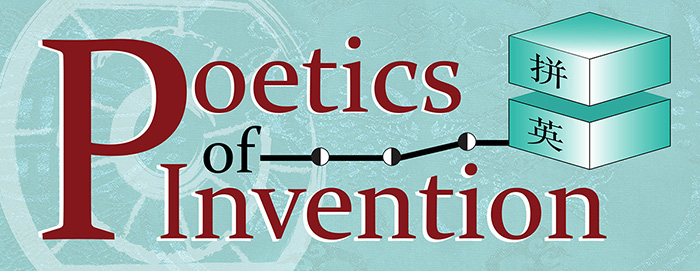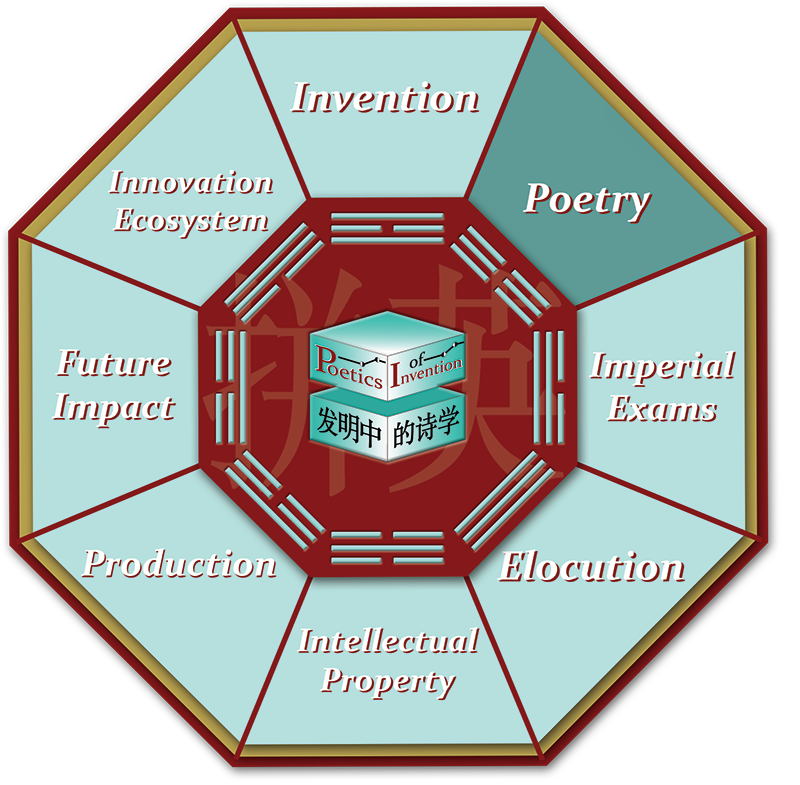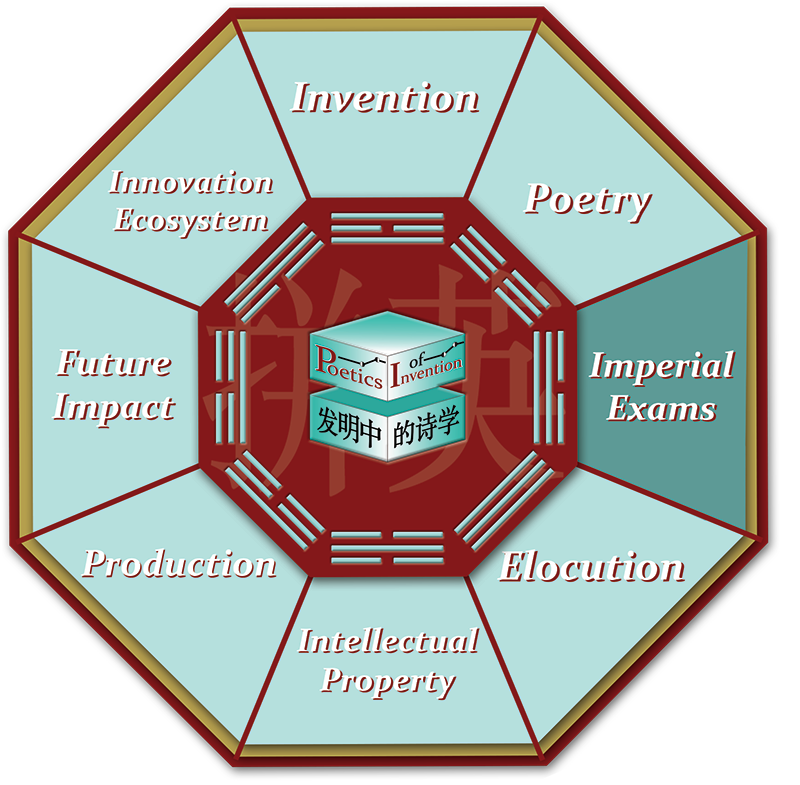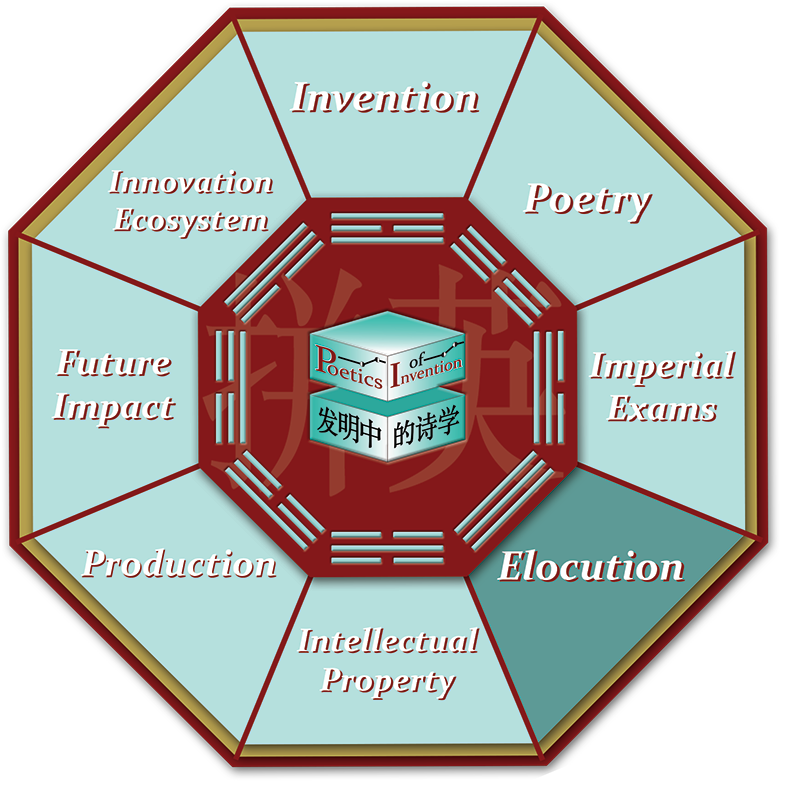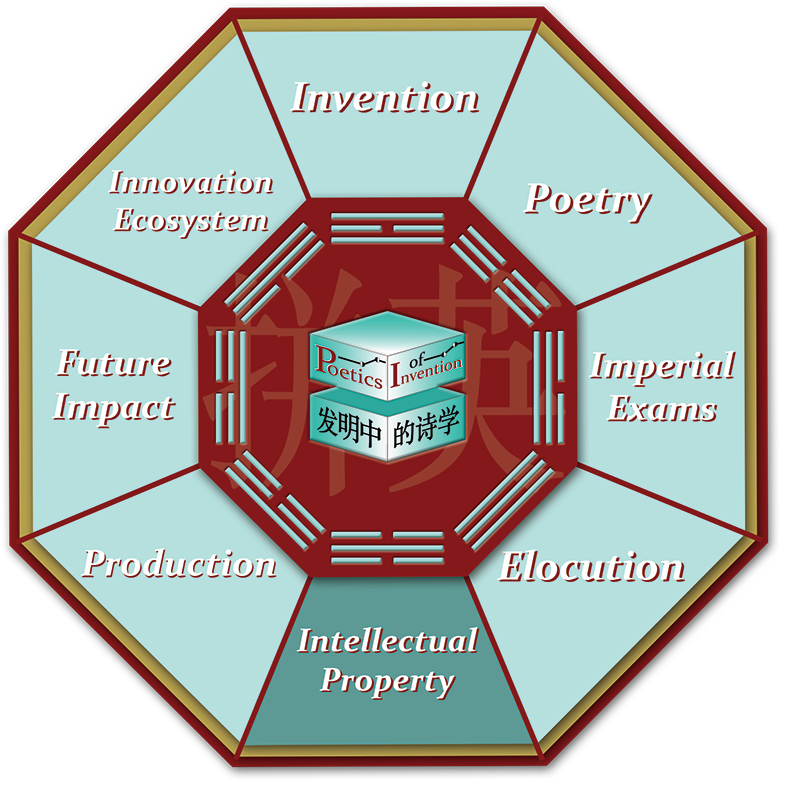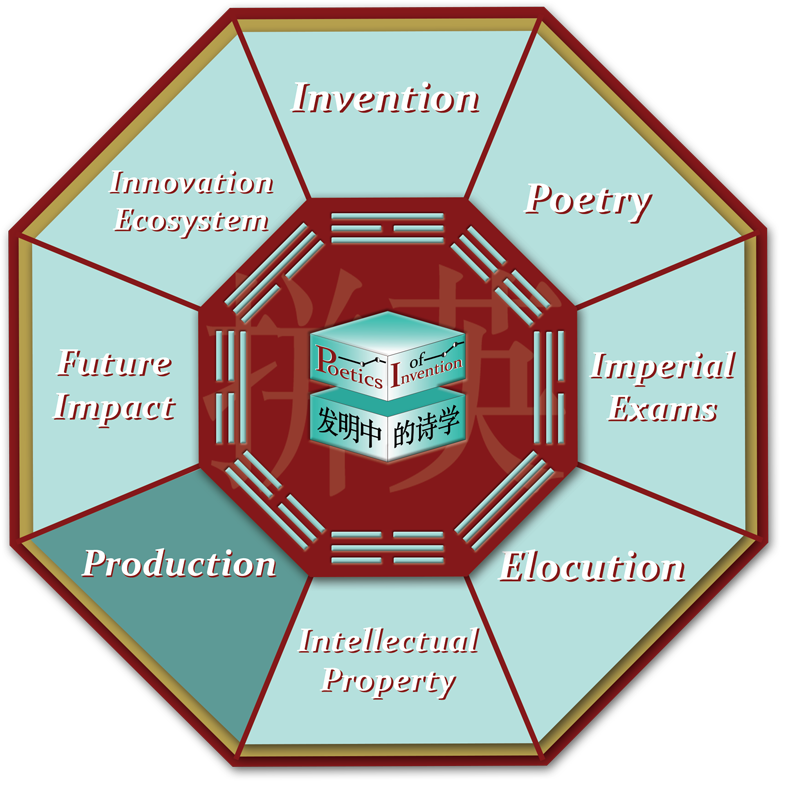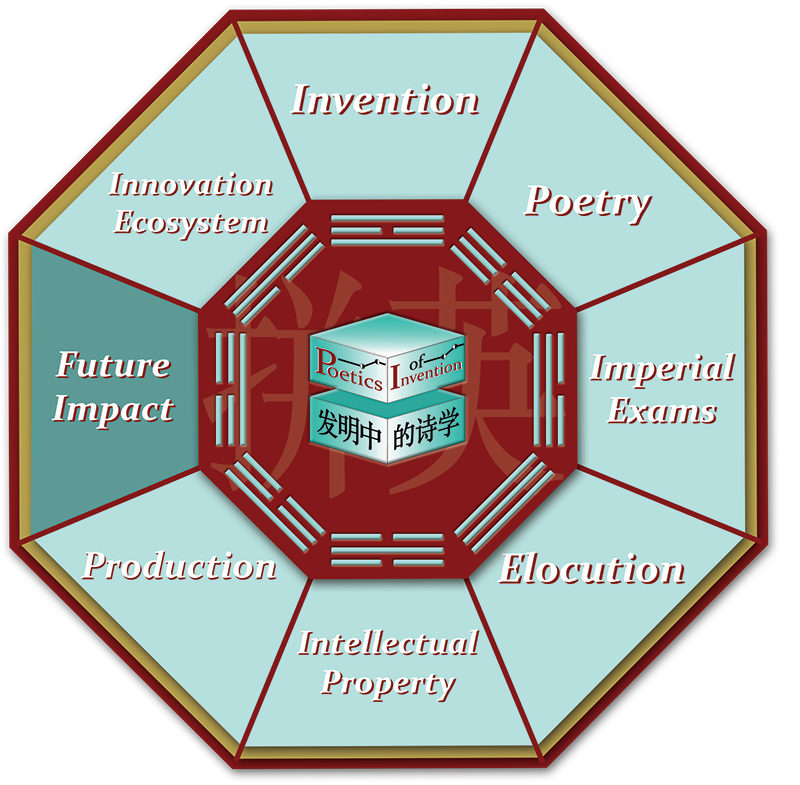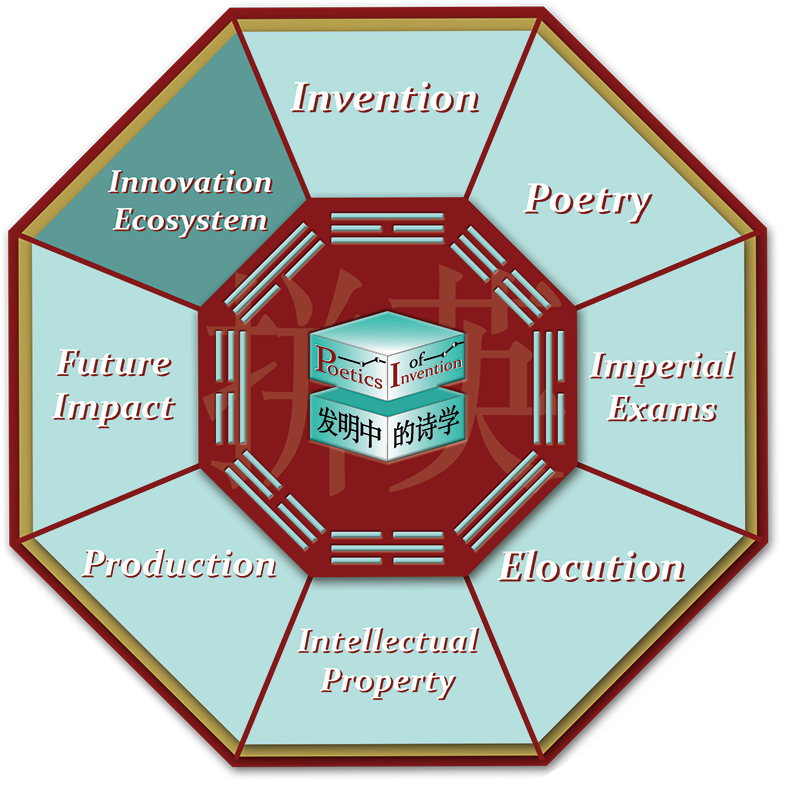Rooms
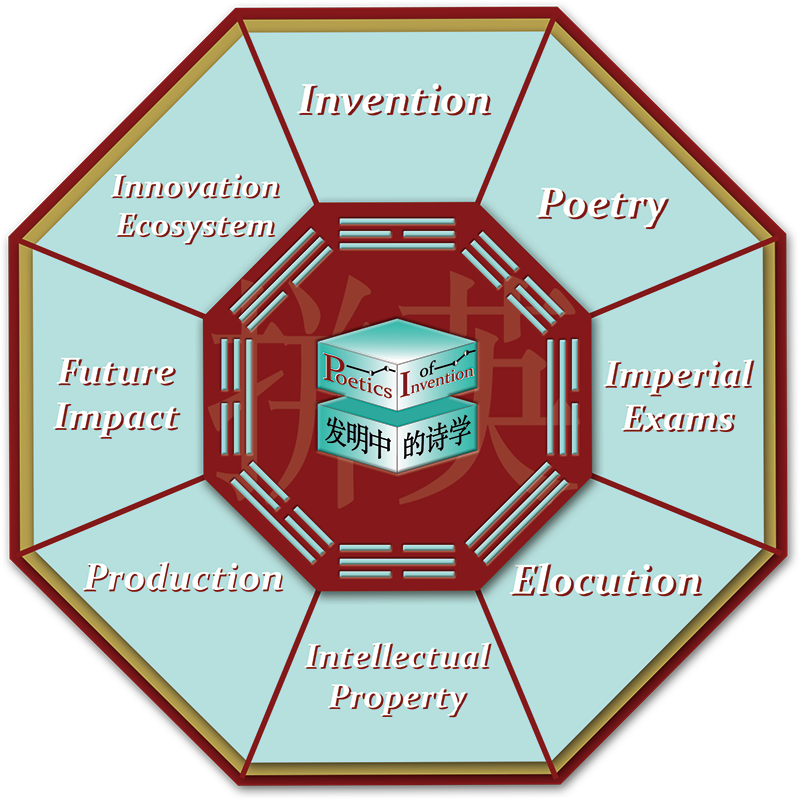
Navigating the Eight Trigrams of the Poetics of Invention:
The “Poetics of Invention” is organized by the theory of yin and yang, the notion that the universe exists as a dynamic tension between two inter-related qualities which gave rise to ancient Chinese technologies that inspired the invention of Pinying. Each of the eight rooms is given a symbol that includes a sequence of three yin and yang lines so that one of the two is always dominant. The exhibit is organized in such a way that each room follows the next according to this ancient logic ending in a configuration known as that which generates eternal change and transformation (houtian bagua, 后天八卦).
The “Poetics of Invention” is organized by the theory of yin and yang, the notion that the universe exists as a dynamic tension between two inter-related qualities which gave rise to ancient Chinese technologies that inspired the invention of Pinying. Each of the eight rooms is given a symbol that includes a sequence of three yin and yang lines so that one of the two is always dominant. The exhibit is organized in such a way that each room follows the next according to this ancient logic ending in a configuration known as that which generates eternal change and transformation (houtian bagua, 后天八卦).
(Invention) Introduction and Overview
The “Poetics of Invention” explores the process of invention from ideation, to fabrication, and to commercialization from the perspective of an OU professor, inventor, and entrepreneur as he attempts to make English more accessible to the 350 million Chinese learners through merging the world’s two most-spoken languages at the level of their phonetic DNA.
(Poetry) Invention in the Past: The Song Dynasty English Rime Tables
What would English have looked like 1000 years ago in China? What were the Chinese “rime tables” and how did they organize language to reveal and support the larger Imperial Knowledge Systems? Why was learning how to “rhyme” language so important to the ruling elite 1000 years ago in China? How did the linguistic technology of that time come to solve both the problems of their time and our own in different ways?
(Imperial Exams) Invention in the Past: Song Dynasty English and the Chinese Imperial Examination
How could Song Dynasty English have become a medium for the Imperial Examination System? How and why did poetry lie at the heart of Imperial China ideology and how have Oklahomans from across the state passed the exam? Can you pass the test?
(Elocution) Invention in the Past: Qing Dynasty English Elocution
While the Imperial Examination System existed through to the beginning of the 20th century, the rise of England as a colonial power in Asia would have ushered in major changes to English in China. The same invention of Pinying would now come to solve very different problems. Could Pinying have provided a stable bridge upon which to teach the Queens English in the Qing Dynasty and into the 20th century? How would the cultural norms of the Victorian period have effected English in China at this time?
(Intellectual Property) Invention in the Present: Inventions and Intellectual Property
What is the timeline for the invention? How did the invention move from an Opera to Patented technology? How many kinds of intellectual property are there and how what kinds of IP are included in the invention of Pinying? How does OU protect its IP?
(Production) Invention in the Present: OU Maker Spaces and Student Participation
How did OU students gain real-world experience working with Professor Stalling to conduct market research and provide engineering and design work? How did OU’s Maker Spaces and Emerging Technology Librarians and Technicians help fabricate the physical and digital embodiments of the invention?
(Future Impact) Invention in the Future: Forest Path: Non-dual Technologies
How does employing a Poetics of Invention lead to a very different kind of spinoff company? How can “non-dual technologies” change the way 350 million English learners in China learn English while challenging the relationship between art and business? What does the technology look like and how does it work?
(Innovation Ecosystem) The OU Innovation Ecosystem
What is the OU Innovation Ecosystem and how can OU inventors make the most of the VPR, OU Library’s emerging technology services and maker spaces as well as those provided by the Innovation Hub, the Office of Technology’s Growth Fund, and CCEW?

